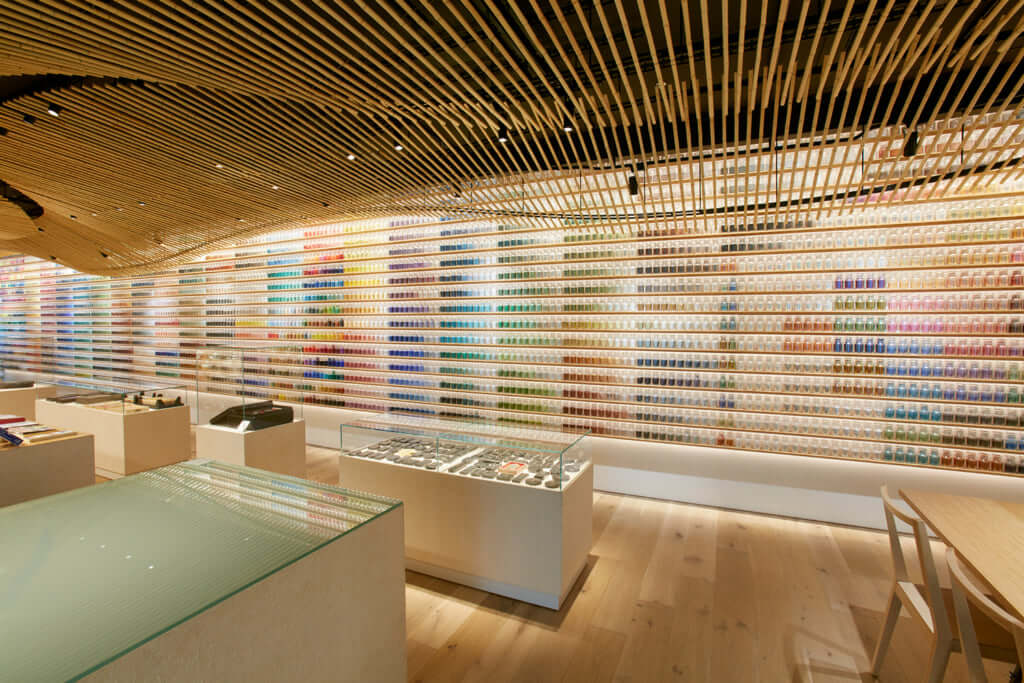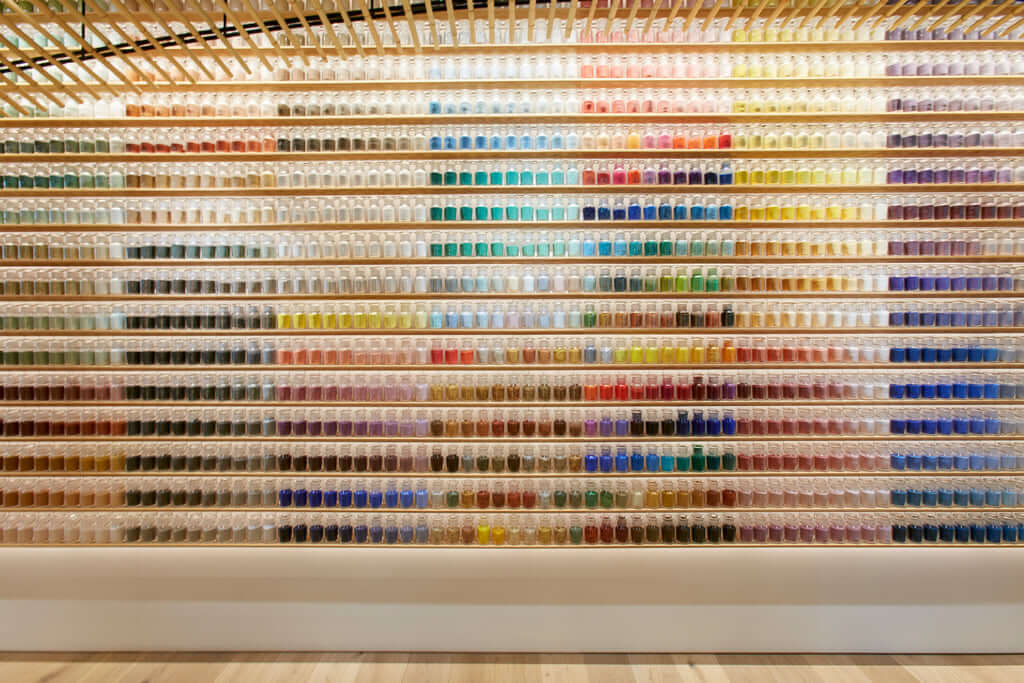PIGMENT, a Shop-Museum Dedicated to Art Supplies
In this store designed by Kengo Kuma, visitors come not only to stock up on materials, but also to admire the coloured pigments on the wall.

© PIGMENT TOKYO
Tokyo’s Shinagawa district is home to PIGMENT, a must-visit shop for those seeking art equipment. It sells over 4200 pigments, nearly 200 antique ink sticks and about 50 animal glues, particularly used for marquetry. Pigment also offers ink stones, washi paper, frames and canvases.
The entire interior of the building, designed by Kengo Kuma, was designed based on organic materials. PIGMENT is housed beneath an undulating ceiling covered with bamboo boards that subtly echo brushstrokes.
A creative laboratory
What differentiates PIGMENT from other existing stores is its concept. The store considers itself as a creative laboratory that’s committed to transmitting knowledge to the younger generations. Certain members of staff, all experts in their field, have thus been recruited to run artistic workshops to help educate people in the use of various techniques and certain materials.
More information about PIGMENT can be found on the store’s website.

© PIGMENT TOKYO

© PIGMENT TOKYO

© PIGMENT TOKYO
TRENDING
-
Ishiuchi Miyako, A Singular Perspective on Women
Recipient of the 2024 Women in Motion Award, the photographer creates intimate portraits of women through the objects they left behind.

-
Recipe for Ichiraku Ramen from ‘Naruto’ by Danielle Baghernejad
Taken from the popular manga with the character of the same name who loves ramen, this dish is named after the hero's favourite restaurant.

-
Namio Harukawa, Master of Japanese SM Art
'Garden of Domina' offers a dive into the world of an icon of ‘oshiri’, whose work has now reached a global audience.

-
The Tattoos that Marked the Criminals of the Edo Period
Traditional tattoos were strong signifiers; murderers had head tattoos, while theft might result in an arm tattoo.

-
The Emperor of Japanese Porn is Now the Star of a Netflix Series
Deliciously funny, The Naked Director especially succeeds in reviving the atmosphere that was so characteristic of 1980s Japan.





